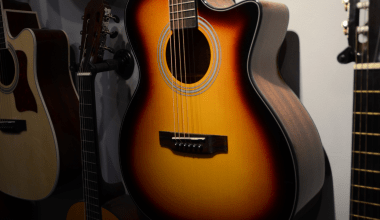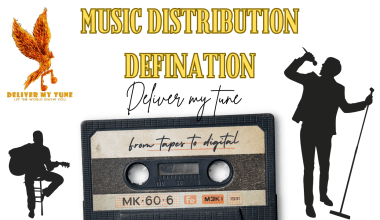Ever wondered why some music sounds better than others, even when it’s the same song? The secret lies in the audio format. Audio formats play a huge role in how we experience music. Some formats are designed to save space, while others aim to deliver the most detailed and lifelike sound.
If you’re passionate about music or simply want the best sound quality, it’s essential to understand the highest quality audio format. Whether you’re building a music library, streaming tunes, or producing your own tracks, choosing the right format can make a world of difference.
In this easy-to-read guide, we’ll explain everything about audio formats, what makes some better than others, and how you can enjoy music at its best. Let’s dive in!
What Makes an Audio Format High Quality?
Before we talk about specific formats, let’s first understand what makes audio sound great.
- Bit Depth: This refers to how much data is used to represent each sound. More bits mean more detail, making the music sound richer and fuller. For example, CDs use 16-bit, while some high-resolution formats use 24-bit or even higher.
- Sample Rate: This is how many times per second the sound is captured or sampled. A higher sample rate (like 96kHz or 192kHz) means more accurate sound reproduction.
- Compression: Audio files can be compressed to save space. Lossy compression (like MP3) removes some data, which can lower quality. Lossless compression (like FLAC) keeps all the data, preserving the original sound.
- Playback Equipment: Even the best audio format won’t sound great without good headphones, speakers, or amplifiers. Quality matters!
Common Audio Formats Explained
Let’s take a closer look at the different audio formats and their quality levels.
MP3: The Popular Choice
MP3 is one of the most widely used formats because it’s small and compatible with almost every device. However, MP3 uses lossy compression, meaning it removes some details from the original recording.
While MP3 is convenient, it’s far from the highest quality audio format. If you listen carefully, you might notice missing details, especially in high or low frequencies.
AAC: A Step Up
AAC (Advanced Audio Coding) is like MP3 but better. It provides better sound quality at the same file size, which is why services like Apple Music and YouTube prefer it. Still, AAC is lossy, so it doesn’t preserve every detail.
What About Lossless Formats?
Lossless formats are where things start getting interesting for people who care about sound quality.
FLAC: The Audiophile’s Favorite
FLAC (Free Lossless Audio Codec) is a go-to format for audiophiles. It compresses files without losing any data, so the music sounds just like the original recording. FLAC files are smaller than uncompressed formats, but they still deliver top-notch sound.
ALAC: Apple’s Equivalent
ALAC (Apple Lossless Audio Codec) works the same way as FLAC but is designed for Apple devices. If you’re using an iPhone or a Mac, ALAC is an excellent choice for preserving high-quality audio.
WAV: Studio Quality
WAV files are uncompressed, meaning they keep every bit of data from the original recording. This makes them perfect for studio use, but their large size can be inconvenient for casual listeners.
AIFF: Apple’s Uncompressed Format
AIFF (Audio Interchange File Format) is similar to WAV but created by Apple. It’s used in professional music production and offers excellent sound quality, though the files are large.
The Best High-Resolution Audio Formats
If you want the absolute best sound quality, high-resolution formats are the way to go.
DSD: The Gold Standard
DSD (Direct Stream Digital) is often considered the highest quality audio format. It captures sound at an incredibly high sampling rate, preserving every tiny detail. However, DSD files are large, and you need special equipment to play them.
MQA: High-Res for Streaming
MQA (Master Quality Authenticated) is a newer format designed for streaming high-resolution audio. It compresses high-quality sound into smaller file sizes without losing much detail. Services like Tidal offer MQA tracks.
Comparing Audio Formats
Here’s a quick comparison of popular formats:
| Format | Type | Quality | File Size | Best For |
|---|---|---|---|---|
| MP3 | Lossy | Low to Medium | Very Small | Casual listening |
| AAC | Lossy | Medium to High | Small | Streaming and portable music |
| FLAC | Lossless | High | Medium | Audiophiles |
| ALAC | Lossless | High | Medium | Apple users |
| WAV | Uncompressed | Very High | Large | Studio recording |
| DSD | High-Res | Extremely High | Very Large | Audiophile-grade setups |
How to Choose the Right Format
- For Everyday Use: MP3 or AAC is fine for casual listening on your phone or car stereo.
- For Audiophiles: FLAC or ALAC is perfect for home listening and archiving your music collection.
- For Studios: WAV or AIFF ensures you capture every detail in your recordings.
- For Streaming High-Res: MQA provides great sound quality without massive file sizes.
- For Perfectionists: DSD offers unmatched quality, but it’s only worth it if you have high-end gear.
Selling Music in the Best Quality
If you’re an artist or producer, releasing your music in the highest quality audio format can make a big difference. Platforms like Beatport allow you to sell tracks in WAV or AIFF, which are preferred by DJs and audiophiles.
Why Quality Matters
Listening to music in a high-quality format lets you hear every instrument, note, and subtle sound the way the artist intended. While lossy formats are convenient, they often strip away the richness and depth of the music.
Investing in better formats, equipment, and streaming services ensures you experience music at its finest.
Where to Find High-Quality Audio
- Streaming Services: Tidal, Amazon Music HD, and Qobuz offer high-quality streaming options.
- Download Stores: HDtracks, Bandcamp, and ProStudioMasters let you buy tracks in FLAC, WAV, or DSD.
- Physical Media: Vinyl records and SACDs are still popular for their analog warmth and fidelity.
Conclusion
Choosing the highest quality audio format is about striking the right balance between sound quality, file size, and your playback setup. Whether you’re streaming, downloading, or creating music, understanding the strengths of each format will help you make the best choice.
Related Articles:
For further reading, explore these related articles:
- Best Audio Format: Easy Guide to Sound Quality and File Types
- Best Audio File Format: A Simple Guide to Quality, Storage, and Compatibility
- Music Press Release Format Made Easy: Step-by-Step Guide
For additional resources on music marketing and distribution, visit Deliver My Tune.






